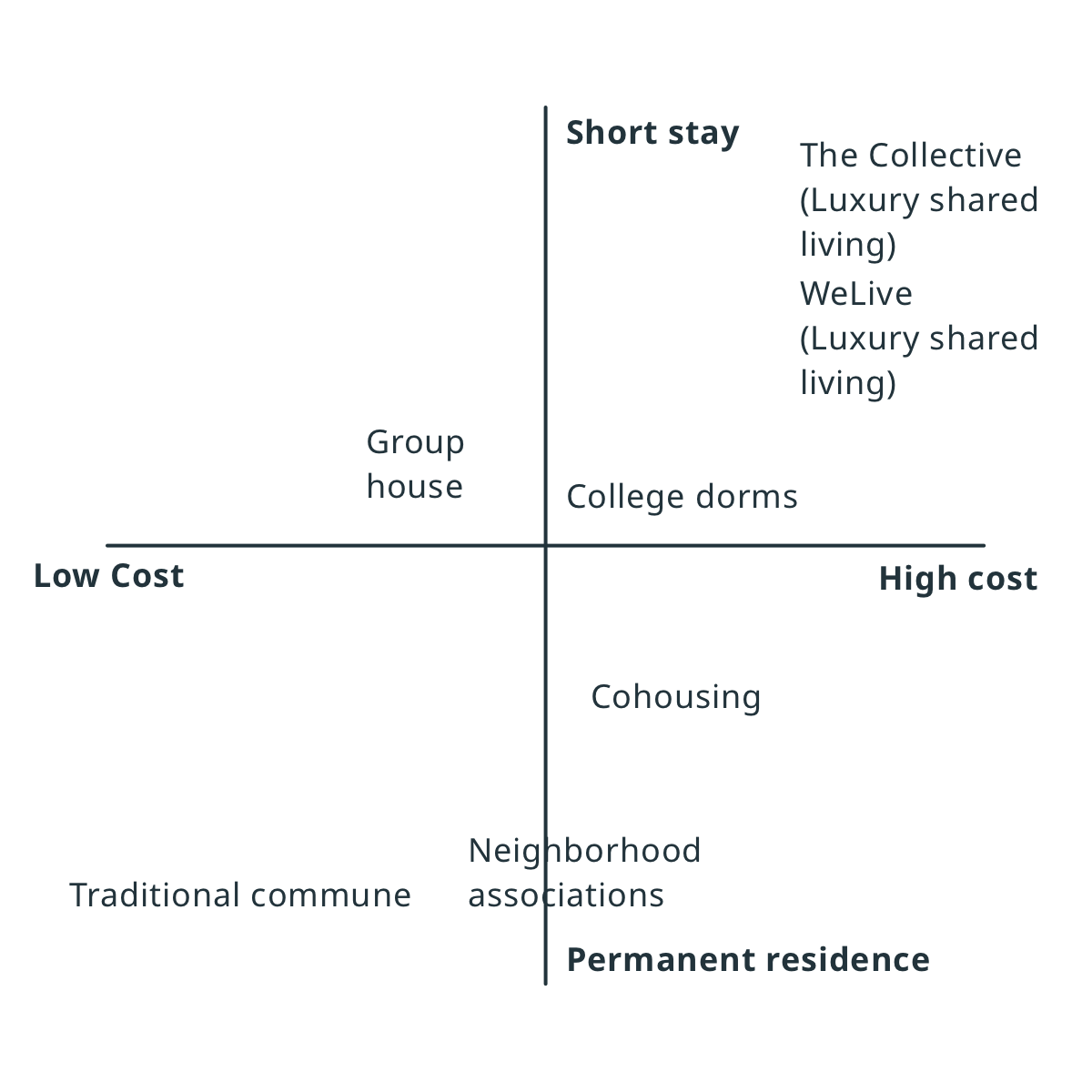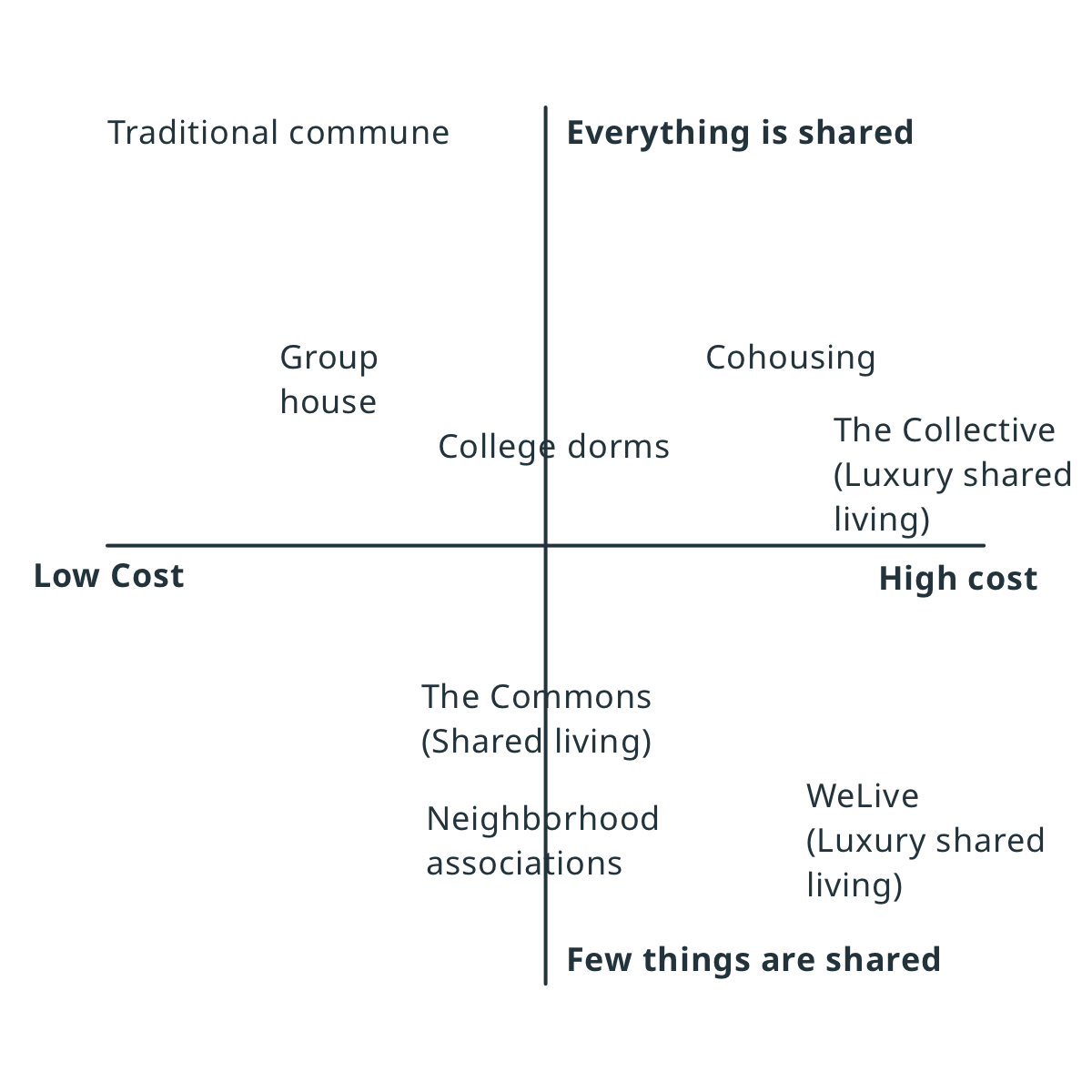How can IKEA harness the power of community to reduce our impact on the planet?
Independent study | 15 weeks
Circular design, branding, UX/UI, service design, research
Jump to: Introduction | Solution | Process | Conclusion
Introduction
Problem
We are limited to a 2°C rise in global temperatures before we cause catastrophic, irreversible damage to our planet. There is a need to dramatically reduce the carbon footprint of Americans and start living in a more environmentally conscious way. As an individual, it is hard to know what actions to take.
The average American’s carbon footprint is about 19 cubic tons. The sustainable, global per person number is 4 tons. Data shows that, 17% of American’s carbon usage comes from heating and cooling their houses.
Opportunity
In most American households, 75% of household space goes largely unused, meaning that resources are being used to heat and cool a large portion of unused space, along with the liveable space. There are a number of shared living models that include varying amounts of shared space, from college dorms to communes, some of which have been able to reduce their footprint by up to 55%.
Why IKEA?
IKEA has set a goal to be climate positive by 2030, meaning that they take more carbon out of the atmosphere than they release. Currently some of the biggest contributors to IKEA’s footprint are their material use (36.5%) and their customers' trips to the store (15%). They are working on incentivizing customers to bring back damaged furniture, or furniture they no longer want or need so that the materials can be reused or the product re-sold.
A coliving space could serve as a “test kitchen” to see how to adapt their business to new models of living. IKEA currently houses a research and design lab that seeks to enable a better everyday life for people and planet.
IKEA also has presence globally in 37 countries and is responsible for 0.1% of global greenhouse gas emissions, so they have an opportunity to make a big impact.
Solution
Product description
House10 Collaborative Living provides residences that balance privacy and community in the pursuit of minimizing our residents’ environmental impact and maximizing their social wellbeing.
Each house includes units with different levels of collaborative living with varying amounts of shared space. The unifying ideology is that all residents are invested in reducing their environmental impact.
Values
Sustainability: We want to be a force for positive change. We have the possibility to make a significant and lasting impact – today and for the generations to come.
Responsibility: We believe in empowering people. Giving and taking responsibility are ways to grow and develop as individuals. Trusting each other, being positive and forward-looking inspires everyone to contribute to development.
Togetherness: We are strong when we trust each other, pull in the same direction and have fun together.
Cost Conscious: As many people as possible should be able to afford a beautiful and functional home. We constantly challenge ourselves and others to make more from less without compromising on quality.
Innovation: We know that tackling a problem like climate change will take agility and determination. We believe in experimenting and that there is always a better way. The pursuit of incremental improvement drives us.
Renew and Improve: We are constantly looking for new and better ways forward. Whatever we are doing today, we can do better tomorrow. Finding solutions to almost impossible challenges is part of our success and a source of inspiration to move on to the next challenge.
Who This Serves
There were four main groups I saw that this model would serve, however there are very few people who would not benefit from living in community.
Recent graduates and young adults looking for community as well as housing that fits their budgets. Community is a valued part of many people’s college experience whether that is a sports team, a greek organization, classmates, any other extra curricular activity, or a close knit friend group nearby, and losing that can be a shock for many young adults. Making friends and finding community after school is challenging, especially when it involves a new city, a new job and a new routine. This group is also navigating a relatively tight budget and is looking for an affordable place to live.
Environmental stewards have a hard time finding a place to live, especially in cities, that aligns with their values. They understand that living around like minded people helps to hold them accountable and do better for themselves and the environment.
People often fantasize about a time and a place where their kids could wander safely down the street to the park or to one another's houses. Families with young children living in proximity to other caregivers are able to share responsibility as well as maintain a safe environment for their children to grow up. Kids are able to play with one another and parents can take turns helping one another out.
Early retirees that have spent time raising families and are ready to move on to a part of their life that doesn't involve maintaining a home. There are elements of their lifestyle that they would like to maintain, such as gardening and social relationships, that coliving can help facilitate.
Empathy Map
I used this to look for opportunity in the model of coliving as well as show how someone would move through this service model.
Digital Tools
The dashboard for House10 is a tool to facilitate shared living in the modern world. It allows residents to plan shared meals, pay their rent, borrow appliances, check events, and manage their banked time. Part of creating community requires solving problems together, so this isn’t meant to eliminate problems or friction, but is meant to serve as a starting point to get the menial portions of tasks out of the way.
Shared Meals
Eating together is a way to raise happiness levels as well as reduce energy usage. By dividing up the labor, it also means that you only have to cook a few nights a month and get to enjoy home cooked meals with the group, stress free the other nights of the month.
“The more often people eat with others, the more likely they are to feel happy and satisfied with their lives. ”
Energy Use
More than any other motivator to conserve energy, comparing your use to your neighbors’ use is the most effective way to reduce energy use. According to Oracle’s research in their home energy report, the more you think that your neighbors actually care about saving energy to help the environment, the more you will engage in energy reducing behaviors.
“On nights when there were community meals in our co-housing neighborhood ... evening peak energy usage dropped by 32%.”
Brand Architecture
Ikea is the parent company, while House10 is the entity that manages the cohousing units. There are individual communities in different locations living under the House10 brand, however the model, data, and research would be open source and available for people starting new communities to use so that they are able to magnify their impact.
The digital tools could also be adopted by other intentional communities, or regular apartment buildings or neighborhood associations so share meals, appliances, and track energy use.
Branding
The name House10 was created with two elements in mind. The name of IKEA’s future research lab is Space10, 1 and 0 being a nod to binary numbers. One goal that House10 is working towards is a reduced carbon footprint, by reducing our footprint by 10% every year for the next 10 years will get us to about 6.5 tons of carbon per person.
Collaborative living is a term that was created as a play on cohousing or co living. The traditional models of cohousing have a certain stigma attached to the term that I wanted to avoid for newcomers to shared living. Collaborative living creates a sense comradery and teamsmanship.
Process
research
The first 4-6 weeks of the project consisted of diving deep into the topic of Circular design and circular economies. I read a lot of articles, books, and resources about how the three main principles of circular economies are being applied across different sectors. The three main principles are:
Design out waste and pollution
Keep products and materials in use
Regenerate natural systems
I then created a design problem for myself to solve: How can IKEA help people reduce their carbon footprint?
Ideation and service model
I had seen intentional communities come up in my research as a way to reduce environmental impact on the world and I started to look into the different kinds of shared living. The model of communal living appeared to be much less wasteful and harmful than the current housing trends, but there was an association with hippie culture and communes that deter people from pursuing shared living options. There is also a very wide spectrum of intentional communities and shared living that I began to dissect and map.
Mapping shared living
I created a user journey and service model to help understand the broader picture, and what the user needs are. This also allowed me to see what key moments would be required to be designed. There appeared two main problems to solve:
- Overcome the negative perceptions of shared housing
- Create a product that is desirable for the user and fits into IKEA's business
Journey Map
Design and Branding
I looked at Swedish design as well as quilts for inspiration and went through a number of iterations to land on the logo as it is now.
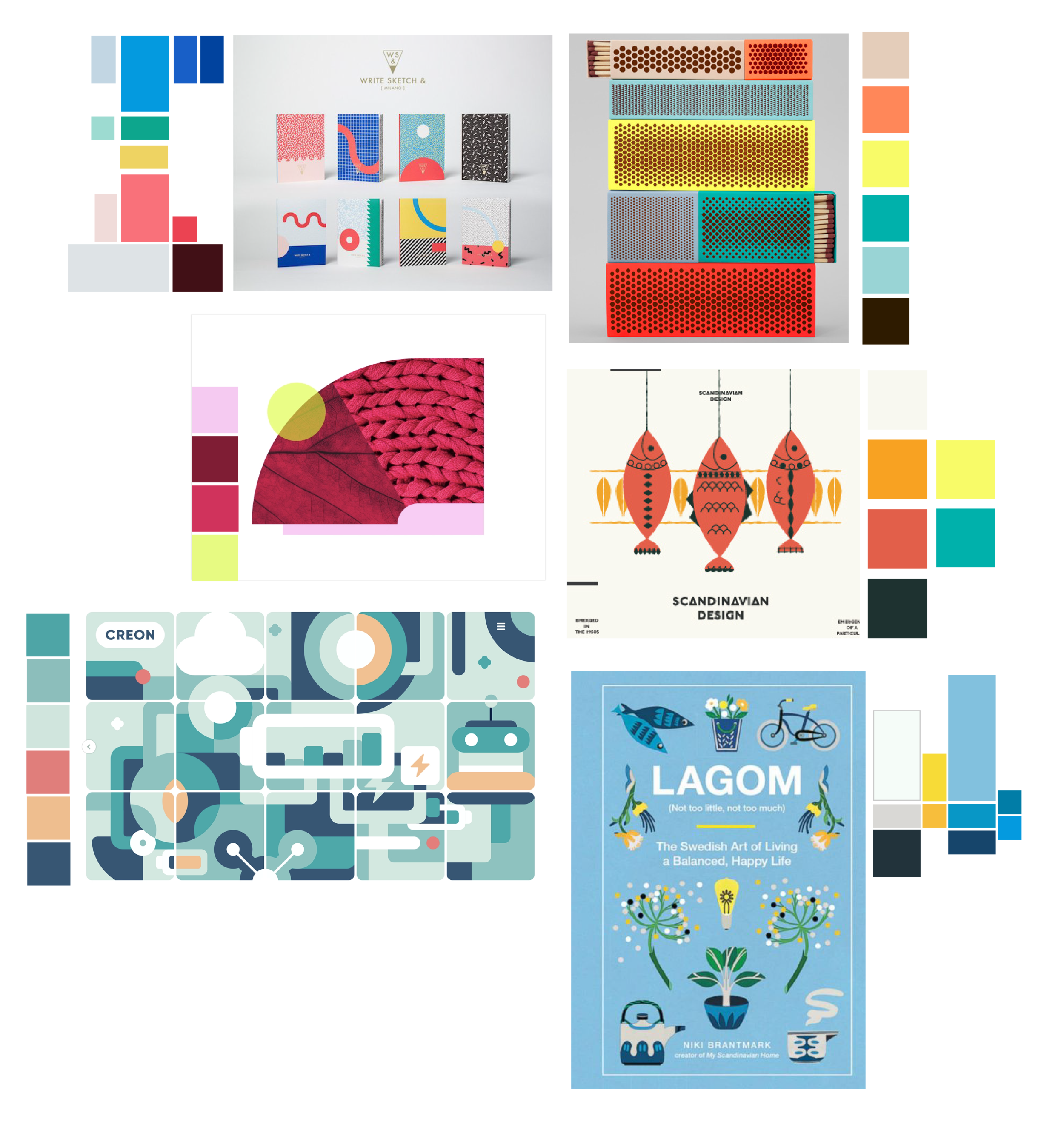
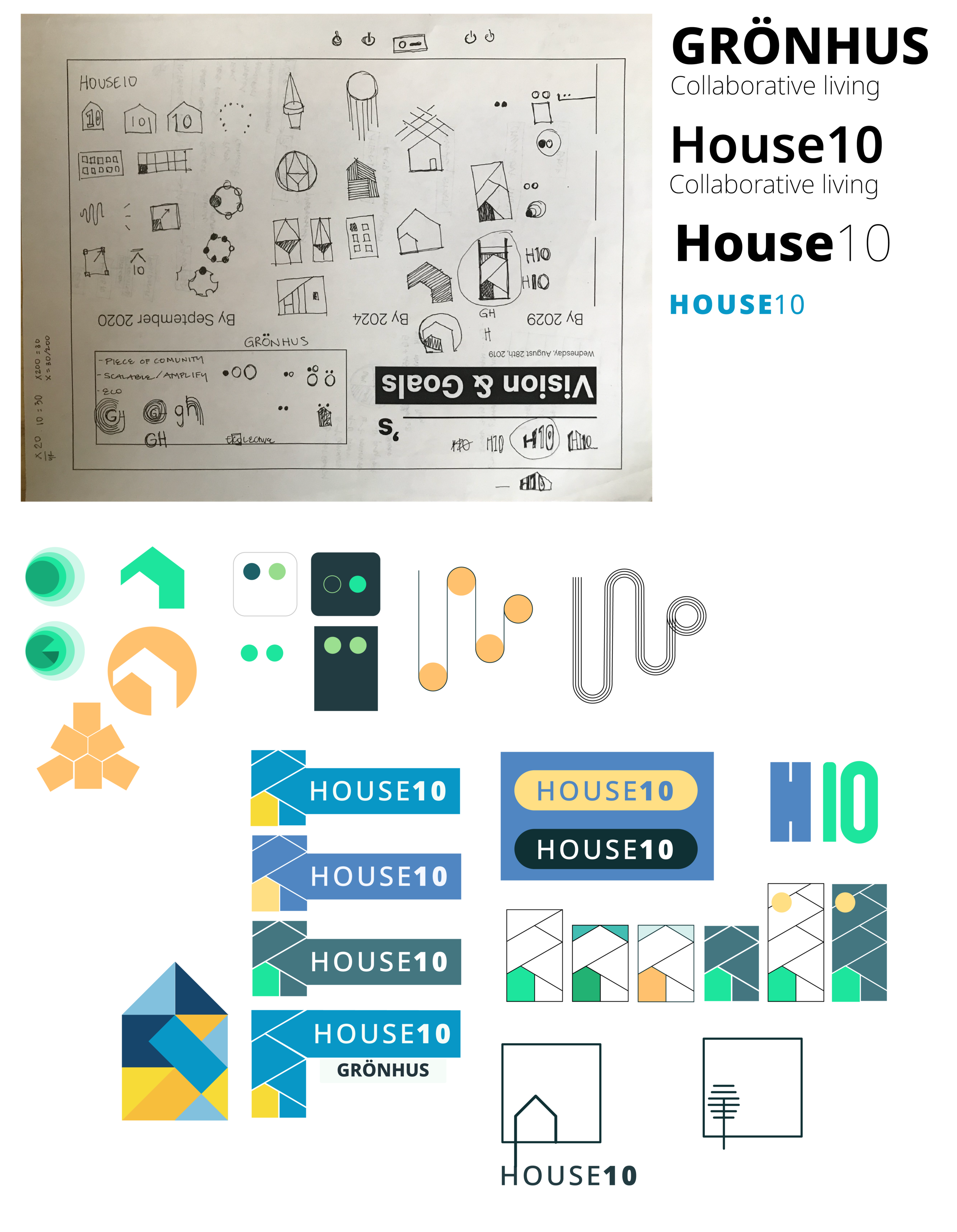
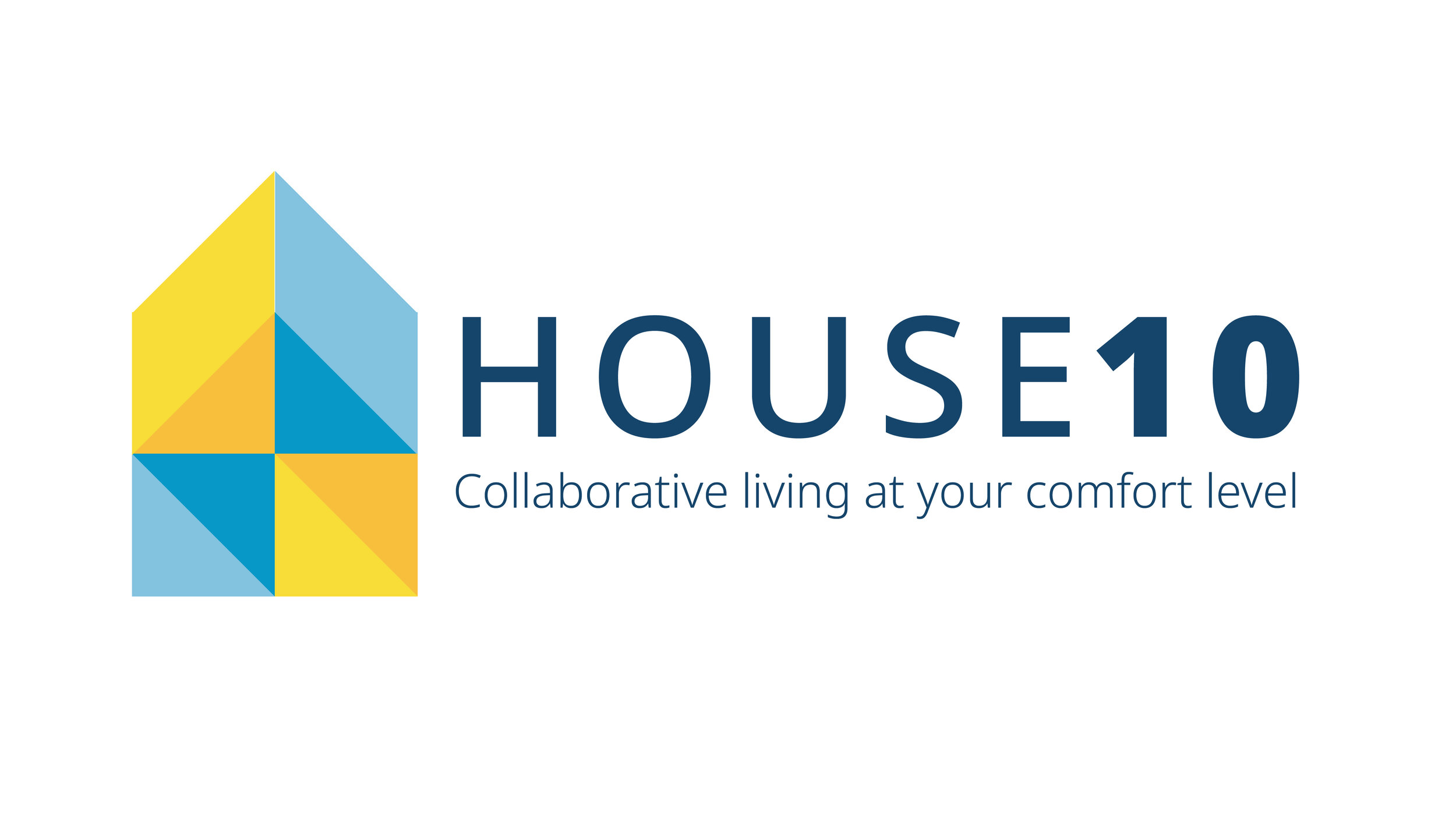
Conclusion
Looking Forward
I really loved learning about designing for a more circular economy. I am currently enrolled in a 10-week course with the Ellen MacArthur Foundation called From Linear to Circular, so that I can stay informed and connected as I enter my career.
There are a number of elements that didn’t fit into the scope or time frame of a semester that I look forward to exploring and iterating on:
Work days are an essential part of maintaining a community. What would these look like for the residents of House10
Exit model - it can be difficult to extricate oneself from a shared housing arrangement whether Is is amicably or not. Creating guidelines about this process will help ease tensions that might arise.
Ownership models - While this model was created for renters, what could alternative ownership or leasing models look like?
How would the House10 experience differ from country to country
What are the needs of families and how do they differ from single adults or couples? What about aging residents?
What does a post COVID world mean for shared living?
I have been thinking about what this means for cohousing and this project. In some ways, coliving is the ideal situation to be able to ride out this pandemic, presuming there are some precautions in place. You are surrounded by a supportive community and potentially could have significantly more social interaction than most people are able to have. I think evaluating a way to segment off portions of the living areas to people who are able to stay home and remain isolated from the people who might be forced to still be working or leaving the house regularly for some reason. If someone were to get sick however, there is a natural support system to help them ride it out at home and take care of necessary arrangements. There is the potential that it could spread quickly through the community, so precautions would still need to be taken and, as with the rest of the country, widespread and frequent testing would be instrumental in keeping everyone safe.
Looking Back
I learned a lot about myself as well as circular design during this process. I was most excited about the innovation and ideation as well as designing the strategy for the digital tools. This was the biggest project I have taken on solo, and there were times I enjoyed working by myself but for the most part I really craved someone to work with to bounce ideas off of and keep the project rolling along. There were times that it took me a really long time to make a decision about something, and having another person involved would have helped dodge some of the decision paralysis along the way. I look forward to including circular design principles in my work moving forward, and seeing how brands are and and will adapt to the demands of the changing climate.
Where to now?
Check out some other work that also values community.




